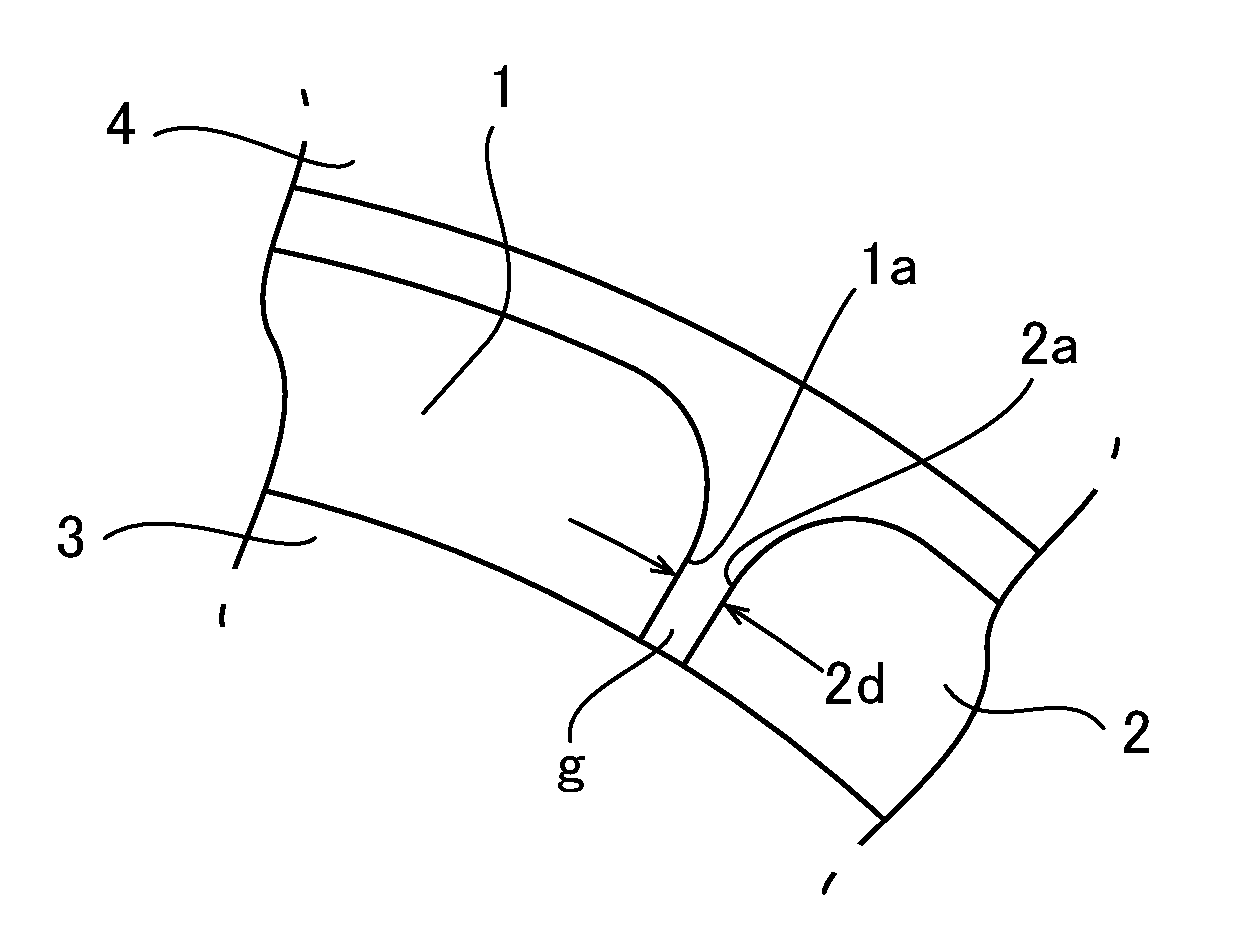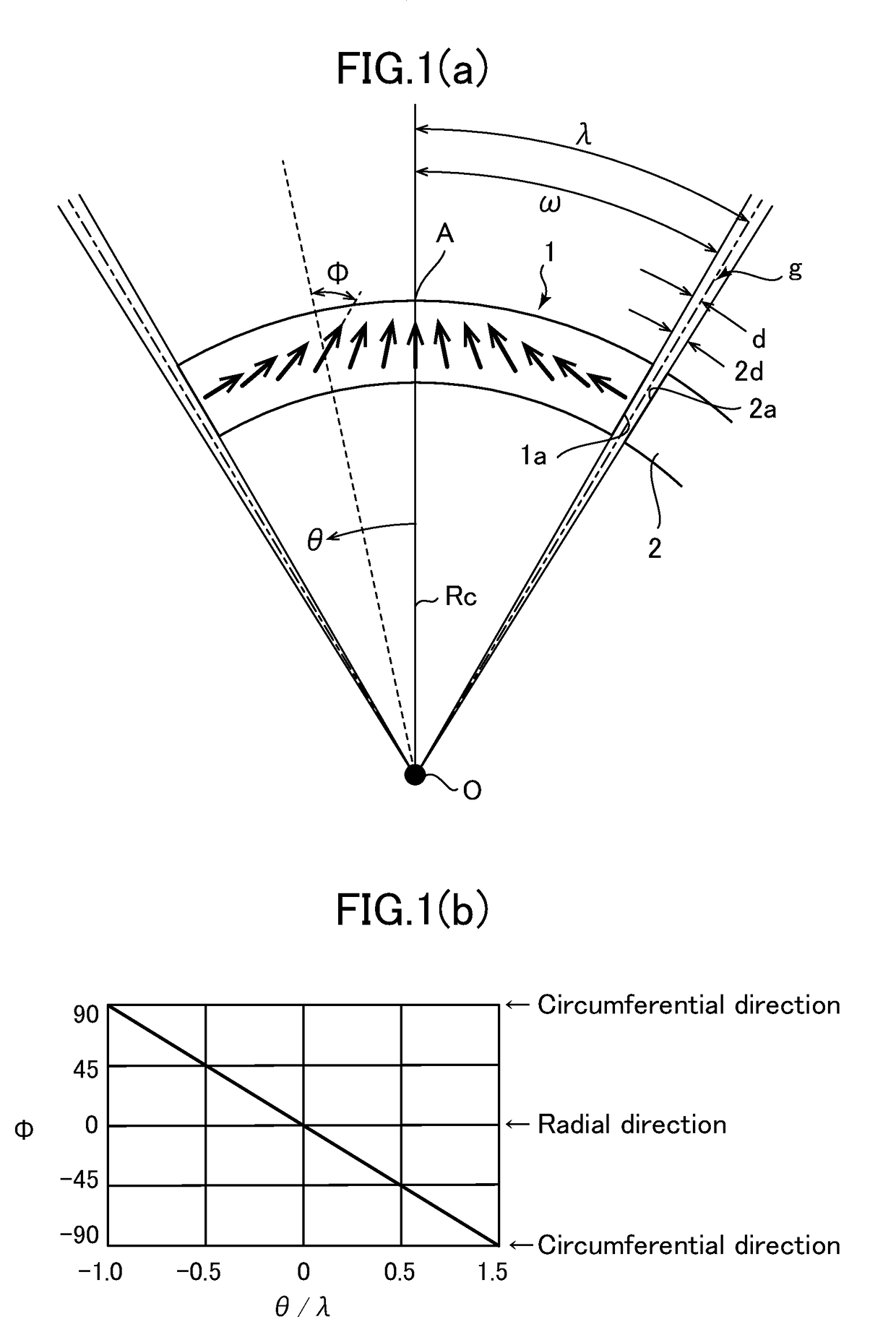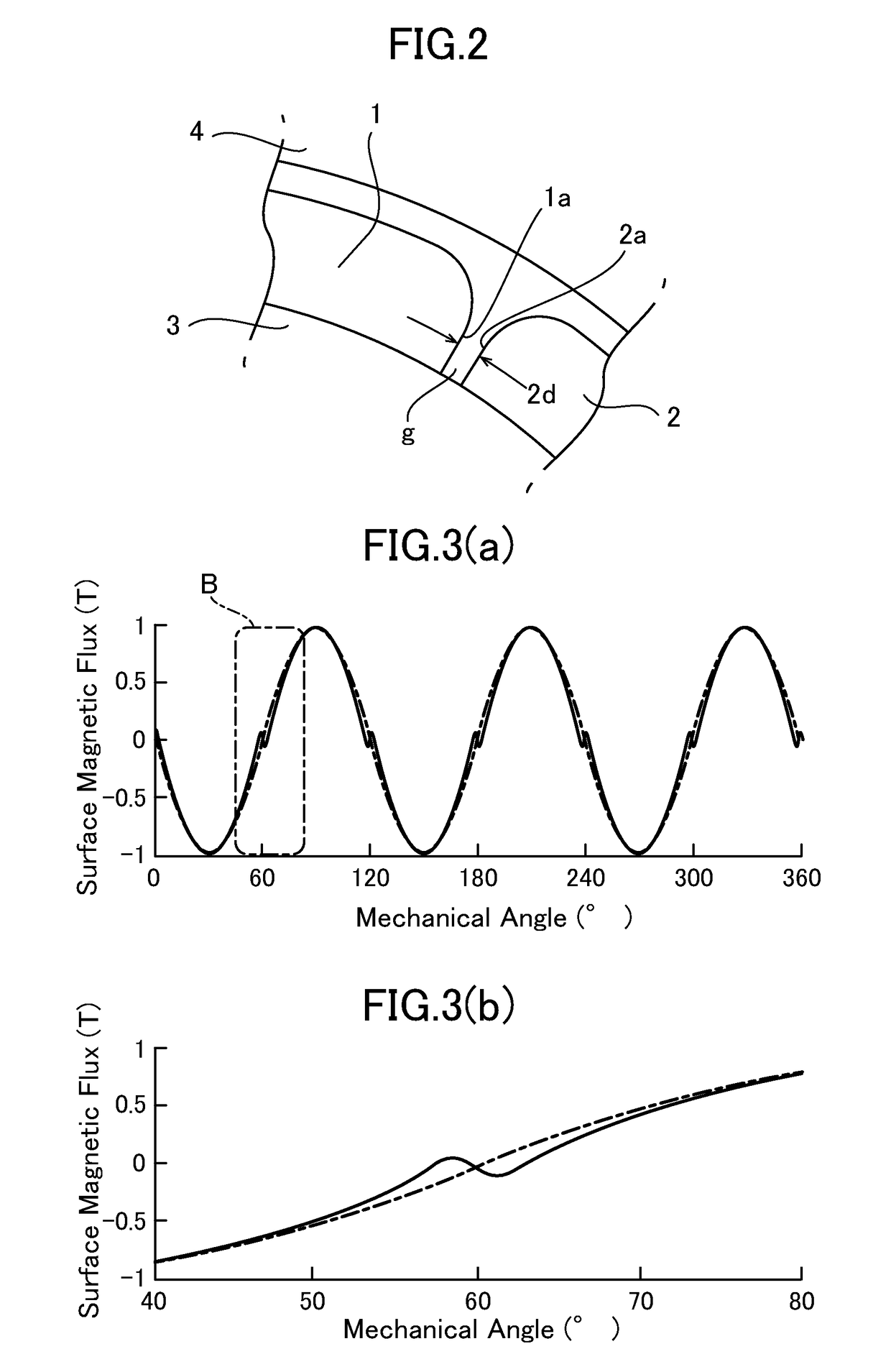Rare-earth Permanent Magnet-Forming Sintered Body, and Rare-earth Permanent Magnet obtained by Magnetizing said Sintered Body
a technology of permanent magnet and sintered body, which is applied in the direction of magnetic bodies, magnetic circuit rotating parts, magnetic circuit shapes/forms/construction, etc., can solve the problems of reducing the efficiency of magnets, increasing the gap between the stator and the rotor, and varying the orientation of easy-to-magnetize axes. to achieve the effect of reducing the cogging torqu
- Summary
- Abstract
- Description
- Claims
- Application Information
AI Technical Summary
Benefits of technology
Problems solved by technology
Method used
Image
Examples
first embodiment
[0042]FIG. 4 depicts a segment magnet 11 for forming a 6-pole polar-anisotropic ring magnet, according to a first embodiment of the present invention. The segment magnet 11 is formed in the same basic shape as that of the segment magnet 1 depicted in FIG. 1(a), i.e., an arc shape having a curvature center at a point O, and disposed over a circumferential length of an angular range 2λ equivalent to one pole of the 6-pole polar-anisotropic ring magnet. The segment magnet 11 is disposed such that a gap g equivalent to the aforementioned angle 2d is formed with respect to a circumferentially-adjacent segment magnet 12. Thus, as previously mentioned with reference to FIG. 1(a), the circumferential length of the segment magnet 11 becomes an angular interval 2ω which is less than the angular range 2λ equivalent to one pole, by the angular range 2d.
[0043]In this embodiment, in the segment magnet 11, a region extending circumferentially inwardly from each of two end faces 11a of circumferent...
second embodiment
[0048]Except that, in the formula (4), m is set to (π / 2)−d+(Δ / ε), and n is set to 1, the second embodiment is exactly the same as the first embodiment. Here, Δ is an arbitrarily set constant. In this case, the magnetization direction Φ(θ) in each of the end region 13 is expressed by the following formula:
Φ(θ)=(1−ε)(90°−d)−[θ−(1−ε)ω](Δ / (εω)) (6)
[0049]The relationship between the angles θ and Φ of the segment magnet 11 according to the second embodiment in which the magnetization direction in each of the end regions 13 is set based on the formula (6) can be indicated by taking θ / λ and Φ, respectively, on the horizontal axis and the vertical axis, as depicted in FIG. 6. As can be seen from FIG. 6, in the segment magnet 11 according to the second embodiment, the magnetization direction angle in each of the end regions 13 linearly decreases in inverse proportion to an increase in the absolute value of the angle θ.
[0050]In the formula (6), A denotes a constant falling within the followin...
third embodiment
[0051]Except that, in the formula (4), each of m and n is a constant arbitrarily set in the range of greater than 1, the third embodiment is exactly the same as the first and second embodiments. In this case, the magnetization direction Φ(θ) in each of the end region 13 is expressed by the following formula:
Φ(θ)=(90°−d)θ / ω−m[(θ / ω)−(1−ε)]n (7)
[0052]The relationship between the angles θ and Φ of the segment magnet 11 according to the third embodiment in which the magnetization direction in each of the end regions 13 is set based on the formula (7) can be indicated by taking θ / λ and Φ, respectively, on the horizontal axis and the vertical axis, as depicted in FIG. 7. As can be seen from FIG. 7, in the segment magnet 11 according to the third embodiment, the magnetization direction angle in each of the end regions 13 changes depending on the angle θ based on a power law.
[0053]Even in a region where Φ changes based on the formula (7) under the power law, there is an area having almost n...
PUM
| Property | Measurement | Unit |
|---|---|---|
| angle | aaaaa | aaaaa |
| curvature radius | aaaaa | aaaaa |
| curvature | aaaaa | aaaaa |
Abstract
Description
Claims
Application Information
 Login to View More
Login to View More - R&D
- Intellectual Property
- Life Sciences
- Materials
- Tech Scout
- Unparalleled Data Quality
- Higher Quality Content
- 60% Fewer Hallucinations
Browse by: Latest US Patents, China's latest patents, Technical Efficacy Thesaurus, Application Domain, Technology Topic, Popular Technical Reports.
© 2025 PatSnap. All rights reserved.Legal|Privacy policy|Modern Slavery Act Transparency Statement|Sitemap|About US| Contact US: help@patsnap.com



